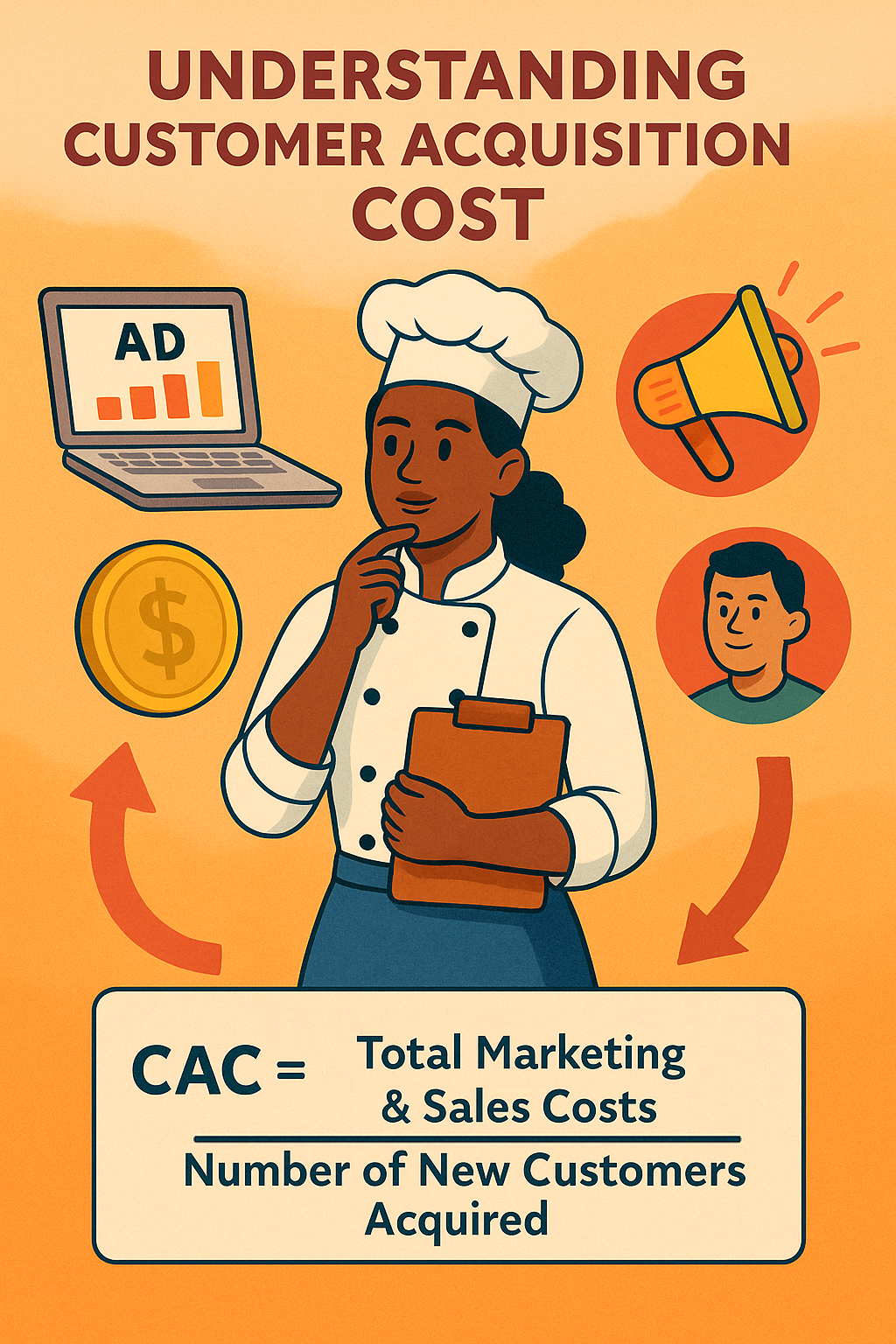If you're building a food business, tracking your numbers isn’t just for accountants—it’s for smart entrepreneurs who want to grow. One of the most important numbers to know? Your CAC. Here's a clear, no-fluff guide to understanding Customer Acquisition Cost (CAC), why it matters, and how you can use it to make better marketing decisions.
What is CAC?
CAC stands for Customer Acquisition Cost. It's the average amount of money you spend to get a new customer. This includes what you spend on marketing, advertising, discounts, and sales efforts.
Formula:
CAC = Total Marketing & Sales Costs ÷ Number of New Customers Acquired
For example, if you spend $1,000 on ads and promotions in a month and you gain 100 new customers:
$1,000 ÷ 100 = 10
Your CAC is $10. In other words, you spent $10 on each new customer.
Why CAC Matters for Food Entrepreneurs
Whether you're selling cookies online, selling chilli oil at a farmer’s market, or running a meal-prep business, understanding your CAC helps you:
- Know if you're spending smart: Are your ads bringing in paying customers or just engagement?
- Set the right prices: Your CAC affects how much you need to charge to stay profitable. If your CAC is relatively high, you’ll have to charge more for your product to keep a good profit margin.
- Plan your growth: A healthy CAC means you can confidently scale your marketing, especially as you venture to new channels.
What to Include in Your CAC
Make sure you’re adding up all relevant costs, which includes essentially everything after your product is ready needed to get your customer to buy it.
Here are some types of things
- Brick and mortar (minus any production parts)
- Website/e-commerce site
- Paid ads (Meta, Google, TikTok)
- Social media management tools
- Email marketing software
- Design or photo/video production costs
- Promo codes or referral bonuses
- Salaries for marketing or sales roles
Don’t include expenses unrelated to acquiring new customers (like kitchen rentals, unless directly tied to promotions or samplings).
How to Use CAC to Make Smarter Decisions
1. Compare to Your Customer Lifetime Value (CLTV)
CLTV is how much a customer will spend with you over time. Ideally, your CAC should be 1/3 of your CLTV. If you find that it’s not, consider narrowing your marketing channels or exploring ways to optimize your existing strategies.
2. Test and Tweak Your Channels
Use CAC to identify your most efficient marketing channels. For example:
- If Instagram ads have a CAC of $8 and Google Ads have a CAC of $15, you know where to put more budget 😊
3. Lower Your CAC Over Time
As you build your brand and word-of-mouth grows, your CAC should decrease: your business will grow organically! Once you have the support to do so, implement these ways to lower CAC even more:
- Referral/affiliate programs
- Low-cost content creation (like TikToks or blog posts)
- Partnerships with other local makers or events
Tools to Track CAC
You don’t need fancy software to calculate CAC. Here are some free or affordable resources:
- Google Sheets or Excel: Create a monthly tracker with a marketing budget, amount of new customer acquisitions, and CAC ratio.
- Meta Ads Manager: View cost per advertisement.
- Google Analytics: Track traffic sources and conversions.
Smarter Numbers, Better Business
CAC isn’t just a marketing metric—it’s a business-building tool. The better you understand it, the more confidently you can grow your brand and make each dollar work harder.





